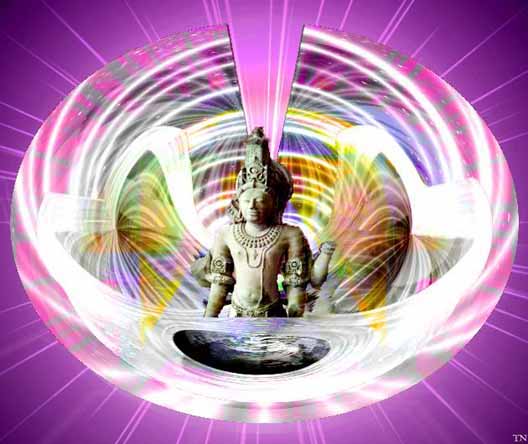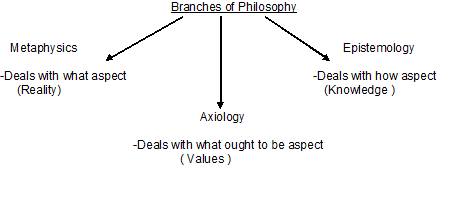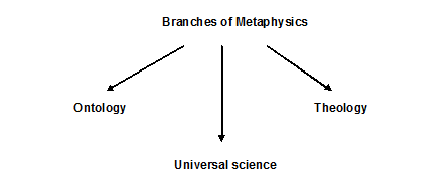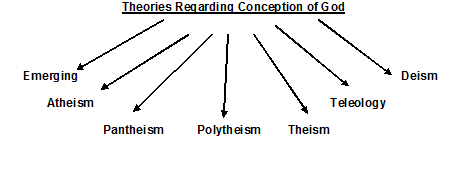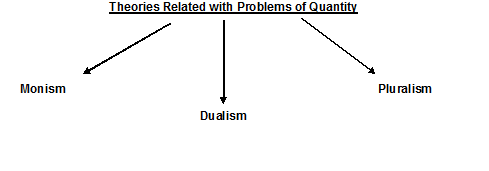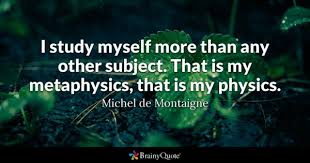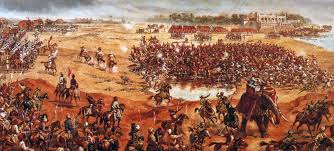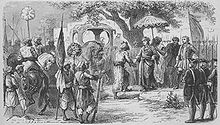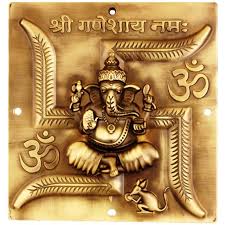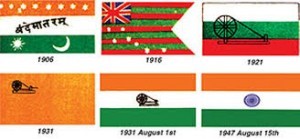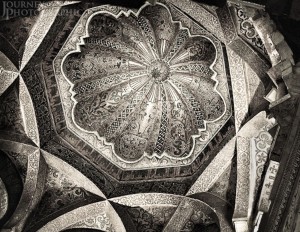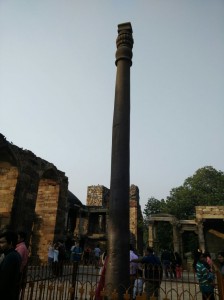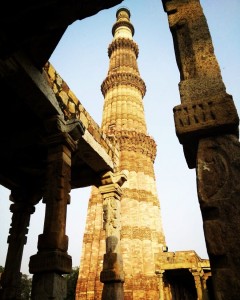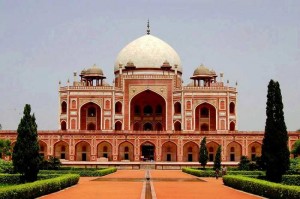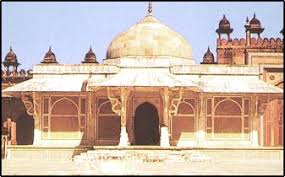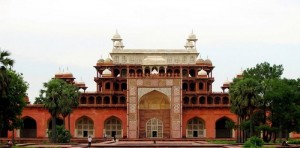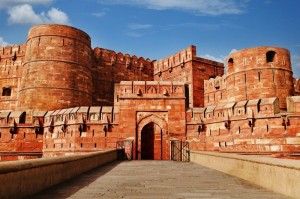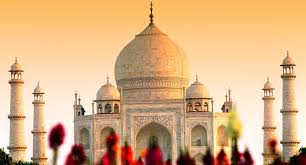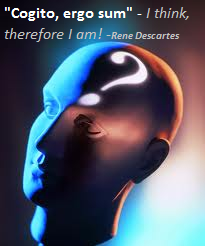Dr. V.K.Maheshwari, M.A. (Socio, Phil) B.Sc. M. Ed, Ph.D.
Former Principal, K.L.D.A.V.(P.G) College, Roorkee, India
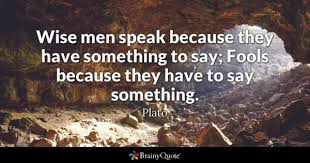
Plato (Platon, “the broad shouldered”) was a philosopher in Classical Greece and the founder of the Academy in Athens, the first institution of higher learning in the Western world. He is widely considered the pivotal figure in the development of Western philosophy.
Born: May 7, 427 BC, Classical Athens. The son of noble parents. According to report, he first studied music, poetry, painting, and philosophy with other masters and became a pupil of Socrates in 407, remaining with him until the latter’s death (399) when he accompanied the sorrowing Socratics to Megara. His death occurred in 347 B.C. Plato was a poet and mystic, as well as a philosopher and dialectician combining, in a rare degree, great powers of logical analysis and abstract thought with wonderful poetic imagination and deep mystical feeling. His character was noble ; he was an aristocrat by birth and by temperament, an uncompromising idealist, hostile to everything base and vulgar.
It is practically uncertain that all Plato’s genuine works have come down to us. The lost works ascribed to him, such as the “Divisions” and the “Unwritten Doctrines”, are certainly not genuine. Of the thirty-six dialogues, some — the “Phaedrus”, “Protagoras”, “Phaedo”, “The Republic”, “The Banquet”, etc. — are undoubtedly genuine; others — e.g. the “Minos”, — may with equal certaintybe considered spurious; while still a third group — the “Ion”, “Greater Hippias”, and “First Alcibiades” — is of doubtful authenticity. In all his writings, Plato uses the dialogue with a skill never since equalled. That form permitted him to develop the Socratic method of question and answer.
Although Plato did not explicitly divide philosophy into logic, metaphysics (physics), and ethics (practical philosophy, including politics), he makes use of such a division in his works. Plato developed such a system
Division of philosophy
The different parts of philosophy are not distinguished by Plato with the same formal precision found in Aristotelean, and post-Aristotelean systems. We may, however, for convenience, distinguish:
- Dialectic, the science of the Idea in itself; [including theory of knowledge],
- Physics, the knowledge of the Idea as incorporated or incarnated in the world of phenomena, and
- Ethics and Theory of the State, or the science of the Idea embodied in human conduct and human society.
The starting-point
Thirty-six dialogues and thirteen letters have traditionally been ascribed to Plato, though modern scholarship doubts the authenticity of at least some of these. No one knows the exact order Plato’s dialogues were written in, nor the extent to which some might have been later revised and rewritten.
The immediate starting-point of Plato’s philosophical speculation was the Socratic teaching. In his attempt to define the conditions of knowledge so as to refute sophistic scepticism, Socrates had taught that the only true knowledge is a knowledge by means of concepts. The concept, he said, represents all the reality of a thing. As used by Socrates, this was merely a principle of knowledge. It was taken up by Plato as a principle of Being. If the concept represents all the reality of things, the reality must be something in the ideal order, not necessarily in the things themselves, but rather above them, in a world by itself. For the concept, therefore, Plato substitutes the Idea. He completes the work of Socrates by teaching that the objectively real Ideas are the foundation and justification of scientific knowledge.. The Platonic theory of Ideas is an attempt to solve this crucial question by a metaphysical compromise. The Eleatics, Plato said, are right in maintaining that reality does not change; for the ideas are immutable. Still, there is, as Heraclitus contended, change in the world of our experience, or, as Plato terms it, the world of phenomena. Plato, then, supposes a world of Ideas apart from the world of our experience, and immeasurably superior to it. He imagines that all human souls dwelt at one time in that higher world. When, therefore, we behold in the shadow-world around us a phenomenon or appearance of anything, the mind is moved to a remembrance of the Idea (of that same phenomenal thing) which it formerly contemplated. In its delight it wonders at the contrast, and by wonder is led to recall as perfectly as possible the intuition it enjoyed in a previous existence. This is the task of philosophy. Philosophy, therefore, consists in the effort to rise from the knowledge of phenomena, or appearances, to the noumena, or realities. Of all the ideas, however, the Idea of the beautiful shines out through the phenomenal veil more clearly than any other; hence the beginning of all philosophical activity is the love and admiration of the Beautiful.
Physics
The Idea, incorporated, so to speak, in the phenomenon is less real than the Idea in its own world, or than the Idea embodied in human conduct and human society. Physics, i.e., the knowledge of the Idea in phenomena, is, therefore, inferior in dignity and importance to Dialectic and Ethics. In fact, the world of phenomena has no scientific interest for Plato. The knowledge of it is not true knowledge, nor the source, but only the occasion of true knowledge. The phenomena stimulate our minds to a recollection of the intuition of Ideas, and with that intuition scientific knowledge begins. Moreover, Plato’s interest in nature is dominated by a teleological view of the world as animated with a World-Soul, which, conscious of its process, does all things for a useful purpose, or, rather, for “the best”, morally, intellectually, and aesthetically. This conviction is apparent especially in the Platonic account of the origin of the universe, contained in the “Timaeus”, although the details regarding the activity of the demiurgos and the created gods should not, perhaps, be taken seriously. Similarly, the account of the origin of the soul, in the same dialogue, is a combination of philosophy and myth, in which it is not easy to distinguish the one from the other. It is clear, however, that Plato holds the spiritual nature of the soul as against the materialistic Atomists, and that he believes the soul to have existed before its union with the body. The whole theory of Ideas, in so far, at least, as it is applied to human knowledge, presupposes the doctrine of pre-existence. “All knowledge is recollection” has no meaning except in the hypothesis of the soul’s pre-natal intuition of Ideas. It is equally incontrovertible that Plato held the soul to be immortal. His conviction on this point was as unshaken as Socrates’s. His attempt to ground that conviction on unassailable premises is, indeed, open to criticism, because his arguments rest either on the hypothesis of previous existence or on his general theory of Ideas. Nevertheless, the considerations which he offers in favour of immortality, in the “Phaedo”, have helped to strengthen all subsequent generations in the belief in a future life. His description of the future state of the soul is dominated by the Pythagorean doctrine of transmigration. Here, again, the details are not to be taken as seriously as the main fact, and we can well imagine that the account of the soul condemned to return in the body of a fox or a wolf is introduced chiefly because it accentuates the doctrine of rewards and punishments, which is part of Plato’s ethical system. Before passing to his ethical doctrines it is necessary to indicate one other point of his psychology. The soul, Plato teaches, consists of three parts: the rational soul, which resides in the head; the irascible soul, the seat of courage, which resides in the heart; and the appetitive soul, the seat of desire, which resides in the abdomen. These are not three faculties of one soul, but three parts really distinct.
Epistemology
Many have interpreted Plato as stating—even having been the first to write—that knowledge is justified true belief, an influential view that informed future developments in epistemology. Plato argues that knowledge is distinguished from mere true belief by the knower having an “account” of the object of her or his true belief. Plato himself also identified problems with the justified true belief definition in the Theaetetus, concluding that justification (or an “account”) would require knowledge of differentiates, meaning that the definition of knowledge is circular .
Plato’s view that knowledge in this latter sense is acquired by recollection.
In several of Plato’s dialogues, the idea that knowledge is a matter of recollection, and not of learning, observation, or study. He maintains this view somewhat at his own expense, knowledge is not empirical, and that it comes from divine insight.
Plato is not content, however, with telling how true concepts and judgments may be obtained ; his chief object is to obtain them, to know reality in all its phases, physical, mental, and moral, to comprehend it in its unity and completeness. Indeed, it is plain to him that the knowledge-problem itself cannot be solved without an understanding of the nature of the world. To this end he develops a universal system, in the spirit of the teachings of the great thinker who became his ideal.
We shall, therefore, follow this order, in a general way, in our exposition of his thought, and begin with logic, or dialectics. Plato clearly understood the great importance of the problem of knowledge in the philosophy of his day. A thinker’s conception of the nature and origin of knowledge largely Dialectics , determined his attitude toward the engrossing questions of the age. If our propositions are derived from sense-perception and opinion, Plato argued, then the Sophists are quite right in their contention that there can be no genuine knowledge. Sense-perception does not reveal the true reality of things, but gives us mere appearance. Opinion may be true or false; as mere opinion it has no value whatever ; it is not knowledge, but rests on persuasion or feeling ; it does not know whether it is true or false, it cannot justify itself. Genuine knowledge is knowledge based on reasons, knowledge that knows itself as knowledge, knowledge that can authenticate itself. The great majority of men think without knowing why they think as they do, without having any grounds for their views. Ordinary virtue is no better off: it, too, rests on sense-perception and opinion; it is not conscious of its principles. Men do not know why they act as they do; they act instinctively, according to custom or habit, like ants, bees, and wasps; they act selfishly, for pleasure and profit, hence the masses are a great unconscious Sophist. The Sophist is wrong because he confuses appearance and reality, the pleasant and the good.
We must advance from sense-perception and opinion to genuine knowledge. This we cannot do unless we have a desire, or love of truth, the Eros, which is aroused by the contemplation of beautiful ideas: we pass from the contemplation of beauty to the contemplation of truth. The love of truth impels us to dialectics; it impels us to rise beyond sense-perception to the idea, to conceptual knowledge, from the particular to the universal. The dialectical method consists, first, in the comprehension of scattered particulars in one idea, and second, in the division of the idea into species, that is, in the processes of generalization and classification. In this way alone can there be clear and consistent thinking; we pass from concept to concept, upward and downward, generalizing and particularizing, combining and dividing, synthesizing and analyzing, carving out concepts as a sculptor carves a beautiful figure out of a block of marble. Judgment expresses the relation of concepts to one another, articulates concept with concept, while the syllogism links judgment with judgment, in the process of reasoning. Dialectics is this art of thinking in concepts; concepts, and not sensations or images, constitute the essential object of thought. We cannot, for example, call a man just or unjust unless we have a notion, or concept, of justice, unless we know what justice is; when we know that, we can judge why a man is just or unjust.
Experience, then, is not the source of our notions; there is nothing in experience, in the world of sense, exactly corresponding to them, to the notions of truth, beauty, goodness, for example; no particular object is absolutely beautiful or good. We approach the sense-world with ideals or standards of the true, the beautiful, and the good. In addition to these notions, Plato came to regard mathematical concepts and certain logical notions, or categories, such as being and non-being, identity and difference, unity and plurality, as inborn, or a priori.
Conceptual knowledge, then, is the only genuine knowledge: that was the teaching of Socrates. Knowledge is the correspondence of thought and reality, or being: it must have an object. Hence, if the idea or notion is to have any value as knowledge, something real must correspond to it, there must, for instance, be pure, absolute beauty as such, realities must exist corresponding to our universal ideas. In other words, such ideas cannot be mere passing thoughts in men’s heads; the truths of mathematics, the ideals of beauty, truth, and goodness, must be real, must have independent existence. If the objects of our ideas were not real, our knowledge would not be knowledge; hence they must be real.
Plato found it necessary, in short, to appeal to metaphysics, to his world-view, for the proof of the validity of knowledge. Sense-knowledge, the kind the Sophist believed in, presents to us the passing, changing, particular, and accidental; hence it cannot be genuine knowledge: it does not tell the truth or get at the heart of reality. Conceptual knowledge reveals the universal, changeless, and essential element in things and is, therefore, true knowledge. Philosophy has for its aim knowledge of the universal, unchangeable, and eternal.
Doctrine of ideas: [Plato’s most original philosophical achievement.]
According to Plato, universals exist. Corresponding to the concept of horse, as example, there is a universal or ideal entity; it is the idea that is known in conceptual knowledge, reason
The variety of ideas or forms is endless: there are ideas of things, relations, qualities, actions and values…[these are some classes of ideas]: of tables and chairs; of smallness, greatness, likeness; of colors and tones; of health, rest and motion; of beauty, truth and goodness…The ideas or archetypes constitute a well-ordered world or rational cosmos; arranged in a connected, organic unity, a logical order subsumed under the highest idea: the Good
The Good, the supreme idea, the logos or cosmic purpose, the unity of pluralities, the source of all ideas…is also the truly real. The function of philosophy, by exercise of reason, is to understand this inner, interconnected order of the universe and to conceive its essence by logical thought
Outline of the doctrine:
[1] The forms, or ideas defined as objects corresponding to abstract concepts are real entities. The Platonic form is the reification or entificiation of the Socratic concept;
[2] There are a variety of forms;
[3] They belong to a realm of abstract entities, a “heaven of ideas”, separate from their concrete exemplification in time and space [the Platonic dualism];
[4] Form is archetype, particular: copy; form is superior: forms are real, particulars mere appearances;
[5] Forms are neither mental – they exist independently of any knowing mind, even God’s – nor physical: yet real;
(6)[forms are non-temporal and non-spatial: eternal and immutable];
[7] They are logically connected in a “communicative” hierarchy in which the supreme form is the Good;
[8] Forms are apprehended by reason, not sense;
[9] The relation between a particular and a form which it exemplifies is “participation”; all particulars with a common predicate participate in the corresponding form; a particular may participate simultaneously in a plurality of forms or successively [in change] in a succession of forms
The Theory of Forms (or Theory of Ideas) typically refers to the belief that the material world as it seems to us is not the real world, but only an “image” or “copy” of the real world. In some of Plato’s dialogues, this is expressed by Socrates, who spoke of forms in formulating a solution to the problem of universals. The forms, ,are archetypes or abstract representations of the many types of things, and properties we feel and see around us, that can only be perceived by reason .In other words, Socrates was able to recognize two worlds: the apparent world, which constantly changes, and an unchanging and unseen world of forms, which may be the cause of what is apparent.
There are, then, two principles; we should say, mind and matter, of which mind is the true reality, the thing of most worth, that to which everything owes its form and essence, the principle of law and order in the universe; while the other element, matter, is secondary, a dull, irrational, recalcitrant force, the unwilling slave of mind, which somehow, but imperfectly, takes on the impress of mind. Form is the active cause, matter is the cooperative cause. It is both friend and foe, an auxiliary and an obstruction, the ground of physical and moral evil, of change and imperfection.
According to Plato the ideas or forms are not mere thoughts in the minds of men or even in the mind of God ; he conceives them as existing in and for themselves, they have the character of substantiality, they are substances ,real or substantial forms: the original, eternal transcendent archetypes of things, existing prior to things and apart from them ,independent of them, uninfluenced by the changes to which they are subject. The particular objects which we perceive are imperfect copies or reflections of these eternal patterns; particulars may come and particulars may go, but the idea or form goes on forever. Men may come and men may go, but the man-type, the human race, goes on forever. There are many objects or copies, but there is always only one idea of a class of things. There are numberless such independent forms, or ideas, nothing being too lowly or insignificant to have its idea: ideas of things, relations, qualities, actions ; ideas of tables and beds and chairs, of colour and tone ; of health, rest, and motion; of smallness, greatness, likeness; of beauty, truth, and goodness.
These ideas or archetypes, though numberless, are not disordered, like chaos; they constitute a well-ordered world, or rational cosmos .The ideal order forms an interrelated, connected organic unity, the ideas being arranged in logical order, and subsumed under the highest idea, the idea of the Good, which is the source of all the rest. This idea is supreme; beyond it there is no other. The truly real and the truly good are identical; the idea of the Good is the logos, the cosmic purpose. Unity, therefore, includes plurality; in the intelligible or ideal world there is no unity without plurality, and no plurality without unity.. The universe is conceived by Plato as a logical system of ideas: it forms an organic spiritual unity, governed by a universal purpose, the idea of the Good, and is, therefore, a rational moral whole. Its meaning cannot be grasped by the senses, which perceive only its imperfect and fleeting reflections and never rise to a vision of the perfect and abiding whole. It is the business of philosophy to understand its inner order and connection, to conceive its essence by logical thought.
The principle, of the Platonic ” matter,” forms the basis of the phenomenal world; as such it is the raw material upon which the forms are somehow impressed. It is perishable and unreal, imperfect, non-being whatever reality, form, or beauty the perceived world has, it owes to ideas. Some interpreters of Plato conceive this Platonic ‘ ‘ matter ‘ ‘ as space ; others as a formless, space-filling mass. Plato needs something besides the idea to account for our world of sense, or nature, which is not a mere illusion of the senses, but an order of lower rank than the changeless ideal realm. This substratum, untouched by the ideal principle, must be conceived as devoid of all qualities, formless, indefinable, and imperceptible. Nature owes its existence to the influence of the ideal world on non-being or matter: as a ray of light, passed through a prism, is broken into many rays, so the idea is broken into many objects by matter. The form- less something is non-being, not in the sense of being non-existent, but in the sense of having a lower order of existence: the term non-being expresses a judgment of value. The sensible world partakes of a measure of reality or being, in so far as it takes on form. Plato does not define more precisely the nature of the relation between the two realms ; but it is plain that the ideas are somehow responsible for all the reality things possess: they owe their being to the presence of ideas, to the participation of the latter in them. At the same time, non-being, the sub- stratum, is responsible for the diversity and imperfection of the many different objects bearing the same name.
In the Timaeus, Plato locates the parts of the soul within the human body: Reason is located in the head, spirit in the top third of the torso, and the appetite in the middle third of the torso, down to the navel.
Doctrine of immortality
Plato advocates a belief in the immortality of the soul, In the early transitional dialogue, the Meno, Plato has introduce the Orphic and Pythagorean idea that souls are immortal and existed before our births. All knowledge, he explains, is actually recollected from this prior existence. In perhaps the most famous passage in this dialogue, Socrates elicits recollection about geometry from one of Meno’s slaves
The part of the individual, which “knows” sense impression and opinion, is the body; the soul knows or has genuine knowledge or science. Because the soul possesses apprehension of ideas prior to its contact with the world: all knowledge is reminiscence and all learning is awakening.
The soul has contemplated eternal ideas and only like can know like .
it cannot be produced by composition or destroyed by disintegration,
As the source of its own motion, the soul is eternal [a survival of atomistic conceptions] [first cause argument, perhaps]…and various other metaphysical arguments.
From the superiority and dignity of the soul: it must survive the body; a variation: everything is destroyed by its “connatural” evil; the evils of the soul its worst vices: injustice, etc. do not destroy the soul – hence its indestructibility.
The theory of knowledge has shown us that there are three kinds of knowledge, sense-perception, opinion, and genuine knowledge or Science. This division influences Plato’s psychology. In sensation and opinion the soul is dependent on the body; in so far as it beholds the pure world of ideas, it is pure reason. The bodily part is, therefore, an impediment to knowledge, from which the soul must free itself in order to behold truth in its purity. The copies of the pure ideas, as they exist in the phenomenal world, merely incite the rational soul to think; sensation provokes ideas, it does not produce them. Hence, the soul must somehow possess ideas prior to its contact with the world of experience. Plato teaches that the soul has viewed such ideas before, but has forgotten them ; the imperfect copies of ideas in the world of sense bring back its past, remind it, as it were, of what it has seen before: all knowledge is reminiscence and all learning a reawakening. Hence, the soul must have existed before its union with a body.
In the early dialogues, Plato’s Socrates is an intellectualist—that is, he claims that people always act in the way they believe is best for them .Hence, all wrongdoing reflects some cognitive error. But in the middle period, Plato conceives of the soul as having three parts:
1. A rational part (the part that loves truth, which should rule over the other parts of the soul through the use of reason),
2. A spirited part (which loves honour and victory), and
3. An appetitive part (which desires food, drink, and sex),
Justice will be that condition of the soul in which each of these three parts “does its own work,” and does not interfere in the workings of the other parts . When these three inward principles are in tune, each doing its proper work, the man is just. The just and honorable course is that which a man pursues in this frame of mind ; he has the ethical attitude when he is wise and brave and temperate, when he has harmonized his soul. Such a man would not repudiate a deposit, commit sacrilege or theft, be false to friends, be a traitor to his country, or commit similar misdeeds.
The human soul, then, is, in part, pure reason , and this rational part is its characteristic phase. It enters a body, and there is added to it a mortal and irrational part, which fits it for existence in the sense-world.The union with the body is a hindrance to the intellectual aspirations of the soul, to knowledge ; the presence of impulses and desires is a hindrance to the ethical supremacy of reason, which reason itself must seek to overcome, as Plato shows in his ethics. A soul that has contemplated the pure eternal ideas must, in part at least, be like these ideas, pure and eternal; for only like can know like. The doctrine of reminiscence proves the pre-existence and continued existence of the soul. Other proofs of immortality are: the simplicity of the soul: whatever is simple cannot be decomposed ; and its life or spontaneity : such a principle of activity cannot be destroyed; life cannot become death .
The pure rational soul, which was created by the Demiurge, once inhabited a star. But it became possessed with a desire for the world of sense and was in closed in a material body as in a prison. In case it succeeds in overcoming the lower side of its nature, it will return to its star, otherwise it will sink lower and lower, passing through the bodies of different animals (transmigration of souls). If the soul had resisted desire in its celestial life, it would have continued to occupy itself, in a transcendent existence, with the contemplation of ideas. As it is, it is condemned to pass through a stage of purification.
The doctrine of the “Eros.
An important phase of Plato’s psychology is the doctrine of the “Eros. Just as sense-perception arouses in the soul the remembrance of pure ideas, or Truth, so the perception of sensuous beauty, which arouses sense-love, also arouses in the soul the memory of ideal Beauty contemplated in its former existence. This recollection arouses yearning for the higher life, the world of pure ideas. Sensuous love and the yearning for the beautiful and the good are one and the same impulse ; in yearning for eternal values, the soul yearns for immortality. The sensuous impulse seeks the continued existence of the species; the higher forms of the impulse are the craving for fame, the impulse to create science, art, and human institutions. These impulses are another evidence of the immortality of the soul, for what the soul desires must be attainable.
The universe is, at bottom, a rational universe: a spiritual system. Objects of sense, the material phenomena around us, are mere fleeting shadows of eternal and never-changing ideas; they cannot endure and have no worth. Only that which endures is real and has value: reason alone has absolute worth and is the highest good. Hence, the rational part of man is the true part, and his ideal must be to cultivate reason, the immortal side of his soul. The body and the senses are not the true part; indeed, the body is the prison-house of the soul, a fetter, deliverance from which is the final goal of the spirit. ” There- fore we ought to fly away from earth as quickly as we can, and to fly away is to become like God.” The release of the soul from the body and the contemplation of the beautiful world of ideas, that is the ultimate end of life.
In the meanwhile the soul, with its reason, its spirited part, and its appetites, is enclosed in its dungeon and has its problems to solve. The rational part is wise and has to exercise fore- thought on behalf of the entire soul : hence, its essential function is to command. The Individual is wise in whom reason rules over the other impulses of the soul,
The ideal, therefore, is a well-ordered soul, one in which the higher functions rule the lower, one which exercises the virtues of wisdom ,courage . self-control ,and justice . A life of reason, which means a life of virtue, is the highest good. Happiness attends such a life ; the just man is after all the happy man. Pleasure, however, is not an end in itself, it is not the highest factor in the life of the soul, but the lowest.
The God/ Demiurge
Plato attempts to explain the origin of nature in his Timaus, a work that reminds one of the early Pre-Socratic philosophies. Like a human artist or workman, the Demiurge or Creator fashions the world after the pattern of the ideal world; guided by the idea of the Good, he forms as perfect a universe as it is possible for him to form, hampered, as he is, by the principle of matter.
The Demiurge or Creator [more an architect than a creator] fashions the world out of matter in the patterns of the ideal world…The four factors in creation enumerated in Timmaeus are
[1] the Demiurge or God: the active principle or dynamic cause of the world;
[2] the pattern as archetype of the world;
[3] the receptacle: the locus and matrix of creation; matter; brute fact; source of indeterminacy and evil; and
[4] the form of the Good
Plato’s cosmology, garbed in myth: an attempt to identify the causes in [and creation of] the actual world [interpretation]
The influence of Plato’s doctrine of ideas, and cosmology is enormous – upon Aristotle: the four causes of Aristotle are the four factors in Plato’s cosmology.
The Demiurge is not really a creator, but an architect ; the two principles, mind and matter, are already in existence: a being is needed who will bring them together. In order to realize his purpose, he endows the world, which is composed of the four material elements, earth, air, fire, water, with soul and life. This world-soul he compounds of the indivisible and divisible, of identity and change, of mind and matter (the four elements), in order that it may know the ideal and perceive the corporeal. It has its own original motion, which is the cause of all motion; in moving itself it also moves bodies; it is diffused throughout the world and is the cause of the beauty, order, and harmony in the world: this is the image of God, a visible God. The world-soul is the intermediary between the world of ideas and the world of phenomena. It is the cause of all law, mathematical relations, harmony, order, uniformity, life, mind, and knowledge: it moves according to fixed laws of its nature, causing the distribution of matter in the heavenly spheres, as well as their motion. Besides the world-soul, the Creator created souls or gods for the planets (which he arranged according to the Pythagorean system of harmony) and rational human souls, leaving it to the lower gods to create animals and the irrational part of the human soul. Everything has been made for man, plants to nourish him, and animal-bodies to serve as habitations for fallen souls.
Therefore, in Plato’s cosmology many gods, to none of whom he definitely ascribes personality, perhaps because he took this for granted, conceiving them in analogy with the human soul: the Idea of the Good, the total world of ideas, the Demiurge, the world-soul, the planetary souls, and the gods of the popular religion.
In these dialogues, we also find Socrates represented as holding certain religious beliefs, such as:
The gods are completely wise and good .Ever since his childhood Socrates has experienced a certain “divine something” which consists in a “voice” ,or “sign” that opposes him when he is about to do something wrong
Various forms of divination can allow human beings to come to recognize the will of the gods .Poets and rhapsodies are able to write and do the wonderful things they write and do, not from knowledge or expertise, but from some kind of divine inspiration. The same can be said of diviners and seers, although they do seem to have some kind of expertise—perhaps only some technique by which to put them in a state of appropriate receptivity to the divine
No one really knows what happens after death, but it is reasonable to think that death is not an evil; there may be an afterlife, in which the souls of the good are rewarded, and the souls of the wicked are punished
Plato on Gender Discrimination and Family
Plato fought against the discrimination of women. At that time women in Greece were not considered the same as men so they were not given education since they were staying home caring for children. For him, women had to be given the same education as men. He believed that differences between sexes are not relevant in constructing a society. He thought that females and males have got the same right of receiving education from the state since the interest of the state is paramount and the kind of education which will produce good men will also produce good women. . He was totally against gender and religious discrimination and proposed that education should be provided to all without any discrimination i.e. without considering race, sex or religion.
Following the mistreatment of women in Greece, education for women raised questions; but to overcome this problem Plato says, “natural gifts are to be found in both sexes …”. So, women and children were supposed to be sent to school for education and not just to stay home.
Moreover, to support this issue Plato asked: are dogs divided into hes and shes, or do they both share equally in hunting and in keeping watch and in the other duties of dogs? Or do we entrust to the males the entire and exclusive care of the flock, while we leave the females at home, under the idea that the bearing and suckling the puppies is labor enough for them? “No” he said, “they share alike; the only difference between them is that the males are stronger and the females weaker”.
So, women have got the same duties as men, and in order to fulfill their duties they must have the same nurture and education.
Plato believed that women are equal to men and that, although some women are physically smaller or weak, some women are physically equal to men therefore those women who are physically strong should be allowed to learn the same skills that men do. In his book Republic Plato describes how male and female receive the same education and be given the same duties in society as given to the male member. These people are the ones who will be in charge his republic which would be an ideal society, where philosophers are kings. In other words, who know what is good for the people and for the mankind and take their decisions based on that knowledge.
The only difference noted between men and women is physical function, i.e. one begets, the other bears children. Apart from physical function, all can perform the same functions. Therefore, in order to perform all these duties, education was necessary for them so that society could get best values from both men and women. But this idea was revolutionary to Greek women, since in Greece they were staying home and took care of babies.
However, Plato recognized also some differences in intelligence and talents; so it was suggested to have different schools for those who have got special talents, i.e. he advocated an educational system, which would distinguish and identify rulers, soldiers and the populace.
Plato does not suggest separate curriculum for women. Women should also be educated in music and gymnastics as well as the art of war. He says that women and girls should undergo the same gymnastic and military exercises as men and boys.
Plato also emphases on women education, he consider the same kind of education for women. Women should the same physical and educational training; they should know the art of war. The main aim of Plato was that each member of the society should undertake his work and responsibilities.
The ideal society is a family:
- Plato opposes monogamy,
- private property,
- recommends for the two upper castes – who are to be supported by workers – communism and common possession of wives and children…
Plato recommends:
- eugenic supervision of marriages and births,
- exposure of weak children,
- compulsory state education, education of women for war and government,
- censorship
Plato: Stages of Education
The state is an educational institution, the instrument of civilization; its foundation must be the highest kind of knowledge which is philosophy. The education of the children of higher classes will follow a definite plan:
- identical for the sexes during the first twenty years:
- myths selected for ethical, gymnastics for body and spirit;
- poetry, music –harmony, beauty, proportion and philosophical thought;
- reading, writing; mathematics which tends to draw the mind from the concrete and sensuous to the abstract and real.
At 20, superior young men will be selected and shall integrate their learning.
At 30, those who show greatest ability in studies, military officers, etc., will study dialectic for five years. Then they will be put to test as soldiers, militias and in subordinate civic offices. Starting at the age of fifty, the demonstrably worthy will study philosophy until their turns come to administer the offices for their country’s sake
Plato’s model of education
Plato’s model of education can be called “functionalist”: a model designed to produce competent adults to meet the needs of the state.
First stage:
Plato believed that education began from the age of seven and before this child should stay with their mothers for moral education and genders should be allowed to plays with each other.
Plato was of the opinion that for the first 10 years, there should be predominantly physical education. In other words, every school must have a gymnasium and a playground in order to develop the physique and health of children and make them resistant to any disease.
Apart from this physical education, Plato also recommended music to bring about certain refinement in their character and lent grace and health to the soul and the body. Plato also prescribed subjects such as mathematics, history and science.
Second stage
This stage is till the age of seventeen. The content of education comprises Gymnastics, literature, music elementary mathematics. Gymnastics is essential for the physical and mental growth. Music is chosen as the medium of education, an avenue for the spiritual growth, and ideas are the contents of education for this stage. After the age of six years both girls and boys should be separated and boys should play with boys and girls with girls and they should be taught the use of different arms to both sexes. This stage goes up to the age of seventeen years
Third stage
This stage is till the age of twenty. This stage is meant for cadet ship and is related to physical and military training. The youth are bought into the stage of battle in this age. After the age of seventeen years the youth should be brought to battle filed to learn real life experiences.
Fourth stage
The four stages start at the age of twenty-five to thirty years and in this age, they get the training of Mathematical calculation and last for another ten years, after the completion the selected one’s are admitted in the study of dialect. Here students undergo mathematical training preparatory to dialectic
Plato has highlighted the qualities needed for an individual to enter higher education. He proclaimed that preference should be given to the surest, bravest, fairest and those who have the natural gifts to facilitate their education.
Fifth stage
This age is from ages thirty to thirty-five. Plato restricted the study of dialectic to this age because he felt that an individual should be mature enough to carry on the study in dialectic, especially about ultimate principles of reality.
Six stage
This age is from thirty five to fifty years, when according to Plato, an individual is ready as a philosopher or ruler, to return to practical life to take command in war and hold such offices of state as befits him. After reaching 50 one should spend the life in contemplation of “the Good” their chief pursuit should be philosophy and should participate in politics, and rule for the good of the people as a matter of their duty.
Plato Concept of Education
Plato gave immense importance to education. In his treatise ”The republic”, Plato has dealt with education in details.
According to Plato- Education the initial acquisition of virtue by the child, when the feelings of pleasure and affection, pain and hatred, that well up in his soul are channeled in the right courses before he can understand the reason why… education, then is a matter of correctly disciplined feelings of pleasure and pain .
Apart from this definition, Plato sees education as “… to ensure that the habit and aspirations of the old generation are transmitted to the younger- and then presumably to the next one after that”.
However, according to Plato, education is a matter of conversion. i.e. a complete turn around from the world of appearances to the world of the reality. ‘The conversion of the souls’, says Plato, ‘is not to put the power of sight in the soul’s eye, which already has it, but to insure that, instead of looking in the wrong direction, it is turned the way it ought to be’ .
Plato’s philosophy of education aims at preparing learners for future life. The objective of education is to turn the soul towards light. Plato once stated that the main function of education is not to put knowledge into the soul, but to bring out the latent talents in the soul by directing it towards the right objects. This explanation of Plato on education highlights his object of education and guides the readers in proper direction to unfold the ramifications of his theory of education.
In “Laws’ he says repeatedly:
“Education is the first and the fairest thing that the best of men can ever have”.
According to Plato the aim of education is the welfare of both the safety of the society and the food of individual. He was of the opinion that education should develop the sense of ideas in people in whom the ability is there, and should purpose and direct each one through the guidance of philosophers for the performance of those works which fits them naturally to perform
Plato presented his philosophy of education in his Republic. The basic theme of education is inquiry is justice. The basic question around which the dialog revolves is , ” what is the meaning of justice.” Socrates defines justice through establishing an analogy between society and individual.
The highest goal of education, Plato believed, is the knowledge of Good; to nurture a man to a better human being it is not merely an awareness of particular benefits and pleasures,
Plato discussed the selection of students together with examinations of the student. According to Plato, a child must take an examination that would determine whether or not to pursue higher education at the age of 20. Those who failed in the examination were asked to take up activities in communities such as businessmen, clerks, workers, farmers and the like.
These selections were in accordance with the age and stage to which these students were admitted. In Greece, pupils were being accepted in the first level at the age of six. Plato emphasized that education must start early. In Greece, boys and girls were being separated. As Plato says, “ when the boys and girls have reached the age of six, the sexes should be separated; boys should spend their days with boys and girls with girls.”. Boys and girls were being taught the same things separately, but the spirit in which they were taught, differed because boys were destined to be soldiers, while girls would become mothers of families, they would only be called upon in an emergency to defend the state.
In the learning process, both Plato wished practical work to be included. For example Plato insisted that those who want to be good builders or good husbandman should learn practically their work. Plato emphasised this point in this way:
…I insist that a man who intends to be good at a particular occupation must practice it from childhood: both at work and at play he must be surrounded by the special ‘tools of the trade’. For instance a man who intends to be a good farmer must play at farming, and the man who is to be a builder must spend his play time building toy houses. Plato considered the role of tradition in learning. it is through tradition that one learns or knows about the history of his/her society.
In the case of formal education Plato emphasised the role of teachers. Plato thought that the role or the function of teachers is to communicate a subject matter to the pupils. Teachers are those who know the subject matter. He emphasised that teachers should have enthusiasm, they should have a spirit of helping students, and good behaviour, treat students with equality and friendship.He believed that students learn many things from their teachers, not only what teachers teach, but also social behaviour through the example shown by their teachers.
In another place he writes “Do not then train youths by force and harshness, but direct them to it by what amuses their minds so that you may be better able to discover with accuracy the peculiar bent of the genius of each.”
The Platonic approach to education comprises the following aspects: sciences and arts, which were to be communicated by teachers to their pupils; moral virtue, necessary to teacher and students, and finally political institutions, which were connected with the learning process.
Plato prescribed a general type of curriculum prevailing in Greece at that time. The curriculum for the early training, that occupied first seventeen years of life, was comprised of music and gymnastics. The word music was used in a much broader sense than we use it today. It included poetry, drama, history, oratory and music in its more limited sense.
Plato , define different stages for the organization and curriculum; named three stages of education: reading and writing as the first stage; second stage: physical education; and the third stage: secondary or literary education.
Plato’s Method of Instruction- The Dialectical Method
Plato is in favor of education in a free atmosphere without any compulsion or check. Plato doesn’t write treatises, but writes in an indirect way, encouraging the reader to ask questions and think for himself. But, like his teacher Socrates, Plato is often happy to play role of observer rather than a preacher. Plato says all elements of instruction should be presented to the mind in childhood, nor how ever, under any notion of forcing . He says that , ” it is better for a learner to be a free man and not to a slave in the acquisition of knowledge.” According to Plato knowledge which is acquired under compulsion detains no hold on the minds of the bearers. Plato believed that there was no compulsion in teaching and it should be more of an amusement.
The teacher must know his or her subject, but as a true philosopher he or she also knows that the limits of their knowledge. It is here that we see the power of dialogue – the joint exploration of a subject – ‘knowledge will not come from teaching but from questioning’.
In this method, the philosopher collects all of the instances of some generic category that seem to have common characteristics, and then divides them into specific kinds until they cannot be further subdivided.
Dialectics is this art of thinking in concepts; concepts, and not sensations or images, constitute the essential object of thought. We cannot, for example, call a man just or unjust unless we have a notion, or concept, of justice, unless we know what justice is; when we know that, we can judge why a man is just or unjust’
This method was introduced probably either late in the middle period or in the transition to the late period, but was increasingly important in the late period. In the early period dialogues, as we have said, the mode of philosophizing was refutative question-and-answer (called the “Socratic method”). Although the middle period dialogues continue to show Socrates asking questions, the questioning in these dialogues becomes much more overtly leading and didactic. In this method, the philosopher collects all of the instances of some generic category that seem to have common characteristics, and then divides them into specific kinds until they cannot be further subdivided.
This is to be understood as synonymous not with logic but with metaphysics. It signifies the science of the Idea, the science of reality, science in the only true sense of the word. For the ideas are the only realities in the world. We observe, for instance, just actions, and we know that some men are just. But both in the actions and in the persons designated as just there exist many imperfections; they are only partly just. In the world above us there exits justice, absolute, perfect, unmixed with injustice, eternal, unchangeable, immortal. This is the Idea of justice. Similarly, in that world above us there exist the Ideas of greatness, goodness, beauty, wisdom, etc. and not only these, but also the Ideas of concrete material objects such as the Idea of man, the idea of horse, the Idea of trees, etc. In a word, the world of Ideas is a counterpart of the world of our experience, or rather, the latter is a feeble imitation of the former. The ideas are the prototypes, the phenomena are typeset. In the allegory of the cave (Republic, VII, 514 d) a race of men are described as chained in a fixed position in a cavern, able to look only at the wall in front of them. When an animal, e.g. a horse, passes in front of the cave, they, beholding the shadow on the wall, imagine it to be a reality, and while in prison they know of no other reality. When they are released and go into the light they are dazzled, but when they succeed in distinguishing a horse among the objects around them, their first impulse is to take that for a shadow of the being which they saw on the wall. The prisoners are “like ourselves”, says Plato. The world of our experience, which we take to be real, is only a shadow world. The real world is the world of Ideas, which we reach, not by sense-knowledge, but by intuitive contemplation. The Ideas are participated by the phenomena; but how this participation takes place, and in what sense the phenomena are imitations of the Ideas, Plato does not fully explain; at most he invokes a negative principle, sometimes called “Platonic Matter”, to account for the falling-off of the phenomena from the perfection of the Idea. The limitating principle is the cause of all defects, decay, and change in the world around us. The just man, for instance, falls short of absolute justice (the Idea of Justice), because in men the Idea of justice is fragmented, debased, and reduced by the principle of limitation. Towards the end of his life, Plato leaned more and more towards the Pythagorean number-theory, and, in the “Timaeus” especially, he is inclined to interpret the Ideas in terms of mathematics
The role of dialectic in Plato’s thought is contested but there are two main interpretations; a type of reasoning and a method of intuition. Simon Blackburn adopts the first, saying that Plato’s dialectic is “the process of eliciting the truth by means of questions aimed at opening out what is already implicitly known, or at exposing the contradictions and muddles of an opponent’s position.” Karl Popper, claims that dialectic is the art of intuition for “visualizing the divine originals, the Forms or Ideas, of unveiling the Great Mystery behind the common man’s everyday world of appearances.”
The dialectical method consists, first, in the comprehension of scattered particulars in one idea, and second, in the division of the idea into species, that is, in the processes of generalization and classification. In this way alone can there be clear and consistent thinking; we pass from concept to concept, upward and downward, generalizing and particularizing, combining and dividing, synthesizing and analyzing, carving out concepts as a sculptor carves a beautiful figure out of a block of marble. Judgment expresses the relation of concepts to one another, articulates concept with concept, while the syllogism links judgment with judgment, in the process of reasoning.
Theory of the State
Plato’s Republic is an ideal of a perfect state, the dream of a kingdom of God on earth. It is frequently spoken of as Utopian.
Plato’s theory of the State, which is given in the Republic, is based on his ethics .
Plato took for granted that the highest good of man, subjectively considered, is happiness (eudaimonia). Objectively, the highest good of man is the absolutely highest good in general, Goodness itself, or God. The means by which this highest good is to be attained is the practice of virtue and the acquisition of wisdom. So far as the body hinders these pursuits it should be brought into subjection. Here, however, asceticism should be moderated in the interests of harmony and symmetry — Plato never went the length of condemning matter and the human body in particular, as the source of all evil — for wealth, health, art, and innocent pleasures are means of attaining happiness, though not indispensable, as virtue is. Virtue is order, harmony, the health of the soul; vice is disorder, discord, disease. The State is, for Plato, the highest embodiment of the Idea. It should have for its aim the establishment and cultivation of virtue. The reason of this is that man, even in the savage condition, could, indeed, attain virtue. In order, however, that virtue may be established systematically and cease to be a matter of chance or haphazard, education is necessary, and without a social organization education is impossible. In his “Republic” he sketches an ideal state, a polity which should exist if rulers and subjects would devote themselves, as they ought, to the cultivation of wisdom. The ideal state is modeled on the individual soul. It consists of three orders: rulers (corresponding to the reasonable soul), producers (corresponding to desire), and warriors (corresponding to courage). The characteristic virtue of the producers is thrift, that of the soldiers bravery, and that of the rulers wisdom. Since philosophy is the love of wisdom, it is to be the dominant power in the state: “Unless philosophers become rulers or rulers become true and thorough students of philosophy, there shall be no end to the troubles of states and of humanity” which is only another way of saying that those who govern should be distinguished by qualities which are distinctly intellectual. Plato is an advocate of State absolutism, such as existed in his time in Sparta. The State, he maintains, exercises unlimited power. Neither private property nor family institutions have any place in the Platonic state. The children belong to the state as soon as they are born, and should be taken in charge by the State from the beginning, for the purpose of education. They should be educated by officials appointed by the State, and, according to the measure of ability, which they exhibit, they are to be assigned by the State to the order of producers, to that of warriors, or to the governing class.
Plato’s philosophical views had many societal implications, especially on the idea of an ideal state or government. Plato, through the words of Socrates, asserts that societies have a tripartite class structure corresponding to the appetite/spirit/reason structure of the individual soul. The appetite/spirit/reason are analogous to the castes of society.
• Productive (Workers) — the labourers, carpenters, plumbers, masons, merchants, farmers, ranchers, etc. These correspond to the “appetite” part of the soul.
• Protective (Warriors or Guardians) — those who are adventurous, strong and brave; in the armed forces. These correspond to the “spirit” part of the soul.
• Governing (Rulers or Philosopher Kings) — those who are intelligent, rational, self-controlled, in love with wisdom, well suited to make decisions for the community. These correspond to the “reason” part of the soul and are very few.
The allegory of the cave (often said by scholars to represent Plato’s own epistemology and metaphysics) is intimately connected to his political ideology (often said to also be Plato’s own), that only people who have climbed out of the cave and cast their eyes on a vision of goodness are fit to rule. Socrates claims that the enlightened men of society must be forced from their divine contemplations and be compelled to run the city according to their lofty insights. Thus is born the idea of the “philosopher-king”, the wise person who accepts the power thrust upon him by the people who are wise enough to choose a good master. This is the main thesis of Socrates in the Republic, that the most wisdom the masses can muster is the wise choice of a ruler.
Plato describes these “philosopher kings” as “those who love the sight of truth” (Republic 475c) and supports the idea with the analogy of a captain and his ship or a doctor and his medicine. According to him, sailing and health are not things that everyone is qualified to practice by nature. A large part of the Republic then addresses how the educational system should be set up to produce these philosopher kings.
The State should be organized like the universe at large and the individual virtuous soul; that is, reason should rule in it. There are as many classes in society as there are functions of the soul, and the relations of these classes to each other should correspond to those obtaining in a healthy soul. Those who have received philosophical training represent reason and ought to be the ruling class; the warrior class represent the spirited element or will : their task is defense ; the agriculturists, and merchants represent the lower appetites, and have as function the production of material goods. Justice is reality in a State in which each class, the industrial, military, guardian, does its own work and sticks to its own business. State is temperate and brave and wise in consequence of certain affections and conditions of these same classes.
The ideal society forms a complete unity, one large family; hence, Plato opposes private property and monogamous marriage, and recommends, for the two upper castes (who are to be supported by the workers), communism and the common possession of wives and children. Among his other recommendations are supervision of marriages and births (eugenics), exposure of weak children, compulsory state education, education of women for war and government, censorship of works of art and literature.
In his later work, the Laws, Plato greatly modifies his political theory. A good State should have, besides reason or insight, freedom and friendship. All citizens should be free and have a share in the government ; they are to be landowners, while all trade and commerce should be given over to serfs and foreigners. The family is restored to its natural position. Knowledge is not everything : there are other motives of virtuous conduct, e.g., pleasure and friendship, pain and hate. Virtue, however, remains the ideal, and the education of the moral will the goal.
Wherein it concerns states and rulers, Plato has made interesting arguments. For instance he asks which is better—a bad democracy or a country reigned by a tyrant. He argues that it is better to be ruled by a bad tyrant, than be a bad democracy (since here all the people are now responsible for such actions, rather than one individual committing many bad deeds.) This is emphasized within the Republic as Plato describes the event of mutiny on board a ship. Plato suggests the ships crew to be in line with the democratic rule of many and the captain, although inhibited through ailments, the tyrant. Plato’s description of this event is parallel to that of democracy within the state and the inherent problems that arise.
There will be no end to the troubles of states, or of humanity itself, till philosophers become kings in this world, or till those we now call kings and rulers really and truly become philosophers, and political power and philosophy thus come into the same hands.-Plato
REFERANCES:
BUSSELL, The School of Plato (London, 1896);
FOUILLEE, La philosophie de Platon (Paris, 1892);
GROTE, Plato and the Other Companions of Socrates (London, 1885);
HUIT, La vie et l’oeuvre de Platon (Paris, 1893);
HUIT, Le platonisme à Byzance et en Italie à la fin du moyen-âge(Brussels, 1894); articles in Annales de philosophie chretienne, new series, XX-XXII;
JOWETT, The Dialogues of Plato (Oxford, 1871; 3rd ed., New York, 1892).
LUTOSLAWSKI, Origin and Growth of Plato’s Logic (London, 1897). For history of Platonism cf.
PATER, Plato and Platonism (London, 1893);
TAROZZI, La tradizione platonica nel medio evo (Trani Vecchi, 1892).
TURNER, History of Philosophy (Boston, 1903); 93 s.q.;
WINDEBLAND, Platon (Stuttgart, 1901);
ZELLER, Plato and the Older Academy, tr. ALLEYNE AND GOODWIN (London, 1888);

